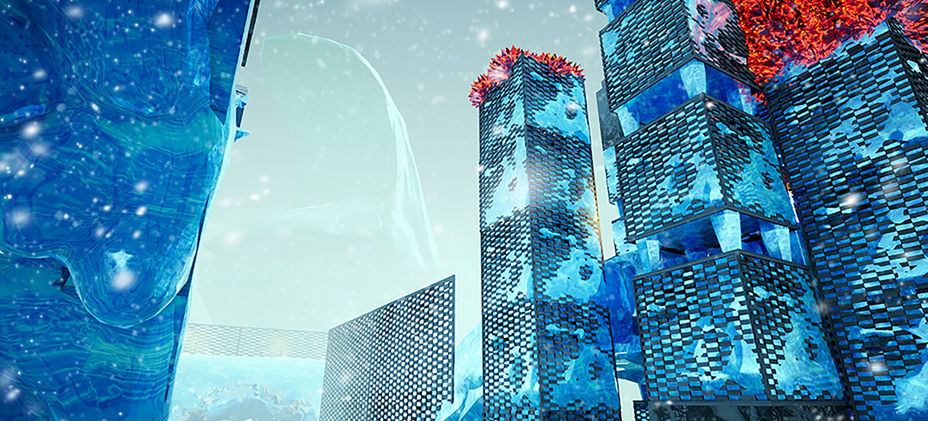FrostRunner
Get it on STEAM "Very Positive" with 1000+ reviews and over 100,000 unique downloads
Game Overview
FrostRunner is a first-person platformer “speedrunning” game, where the player is tasked with rapidly completing platforming challenges before the timer runs out. The game is set in a desolate, frozen environment seemingly abandoned by all life. Scattered throughout the icy landscape are mysterious energy crystals emanating a strange power. The player navigates 36 levels of arctic terrain using their platforming skills and a tool that allows them to tether between crystals. The constantly ticking timer encourages players to complete levels as quickly as possible and compete with others to earn their place at the top of the leaderboards.
Development Overview
FrostRunner was composed of a 13-person team with five level designers, three artists, three programmers, one game designer, and one producer.
This fall at SMU Guildhall I was given the opportunity to prove myself as a team leader for my cohort’s capstone game FrostRunner. I was approached by the faculty, our executive producers, at the end of summer pre-production to step up and take over the position of the lead level designer on FrostRunner because the design team was not delivering on its potential.
As the new lead level designer, I set out to solidify the pre-production level design vision by creating initial example levels that embraced FrostRunners pillars: movement is everything and approachable skillful mastery. The core of the design process behind FrostRunner's levels centers on pacing with the moment-to-moment actions designed for the players to execute.
Creating three example levels allowed me to present a cohesive set of level examples to the other designers. It allowed me to take them through the design process behind the three levels and give them reference for scale, scope, and l requirements of the levels they would be designing and creating.
I planned the level progression instituting a need, want, and DLC categorization for level priority by breaking down what levels were critical for each sprint and milestone delivery. Providing references for level requirements and level priority allowed me to course correct the design team.
Part of ensuring the success of FrostRunner's design team was creating a fluid pipe to adjust and accommodate the accelerated iterative design process. A core part of the design team's pipeline was a robust pitch process where each level designer would pitch a paper prototype of a level to myself and the Game Designer before going and flushing out the level in the engine.
The pitch process allowed for a critique of the initial level that resulted in either flushing out the pitch or cutting the initial design before too much time was invested on it. The pitch process also helped maintain consistency between FrostRunner's levels.
Work Examples
Level: Snowfall
Besides my duties as the lead level designer for FrostRunner, I also designed and created 21 of the levels in FrostRunner’s shipped build, along with all 30 collectible locations used to unlock the 6 insanity levels. Below are two examples of the levels that I contributed to FrostRunner.
Teaching a player the reset mechanic was challenging because the player needed to voluntarily enter into a fail state. My inspiration for designing this level was from Mario and how they teach a player various jump distances. That is one of the key reasons why “Snowfall” is placed right after “Learn to Jump”, the jumping tutorial level, because the player needs to think that they could jump a long distance over a pit.
I designed Snowfall to have an impossible jump that would force a player to fall down into a pit containing the tutorial’s images and text on the wall facing the player. When players dropped down into the pit, they would pass through an invisible trigger box that would drop down a platform into the gap between the players and the exit gate. Upon resting players would be able to easily jump across the previously impossible gap.
Level: Air Time
The Air Time is FrostRunners third level in the Fling chapter. Air Time was designed around a timing skill check with the Fling mechanic to support FrostRunners pillar of skillful mastery. The Fling mechanic has a variable launch distance based on when the player presses the spacebar while they are tethered to a crystal.
I laid out the level with lower and upper platforming paths, with the upper path locked behind the fling skill check. The entrance to the upper path is placed close to the maximum fling distance in order to test players on their precision and timing mastery of variable fling distances. The landing pad for the lower platform path was exaggerated back to wrap around the upper path's edge to catch players that failed to make the expert fling and still wanted to complete the level with resting.













